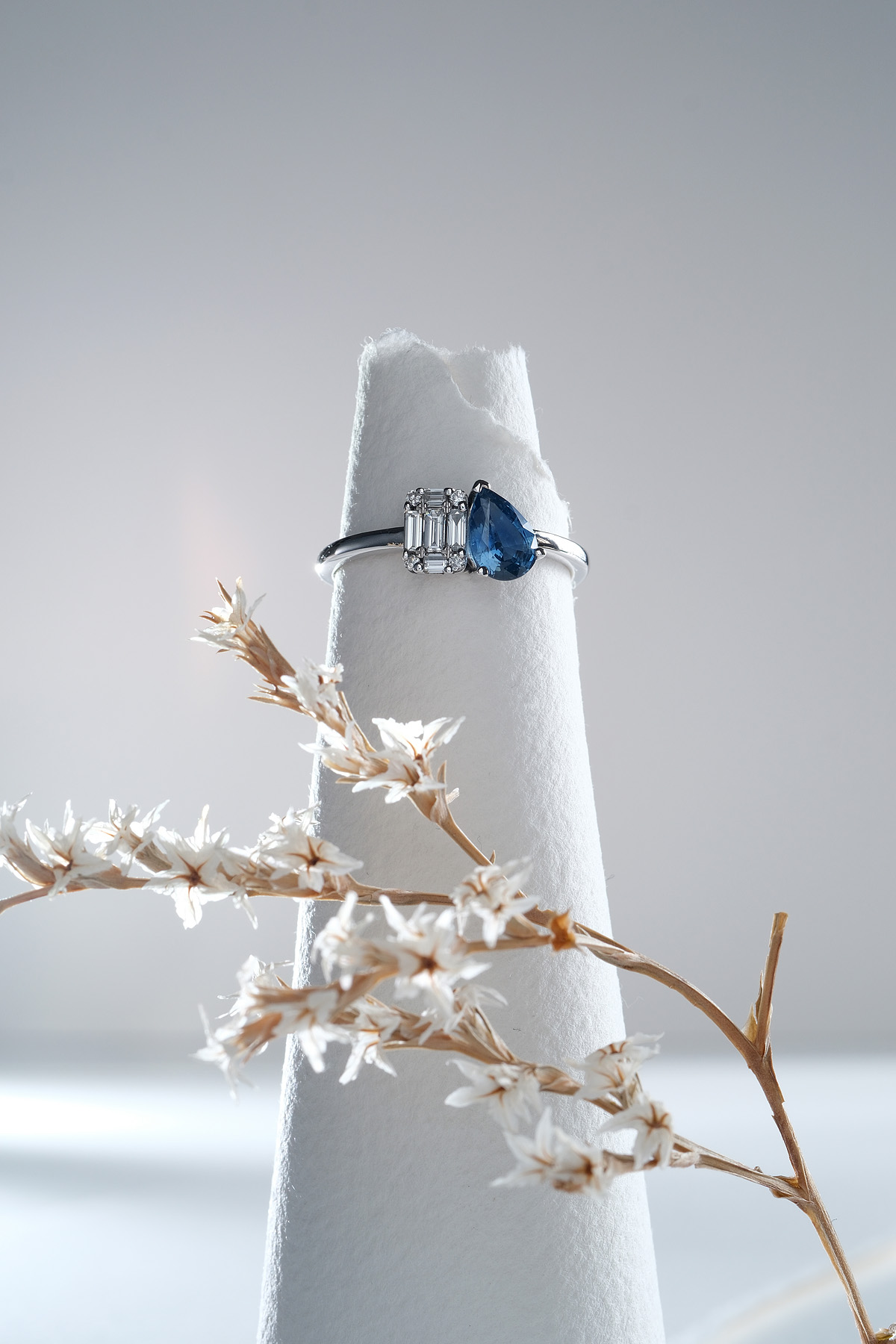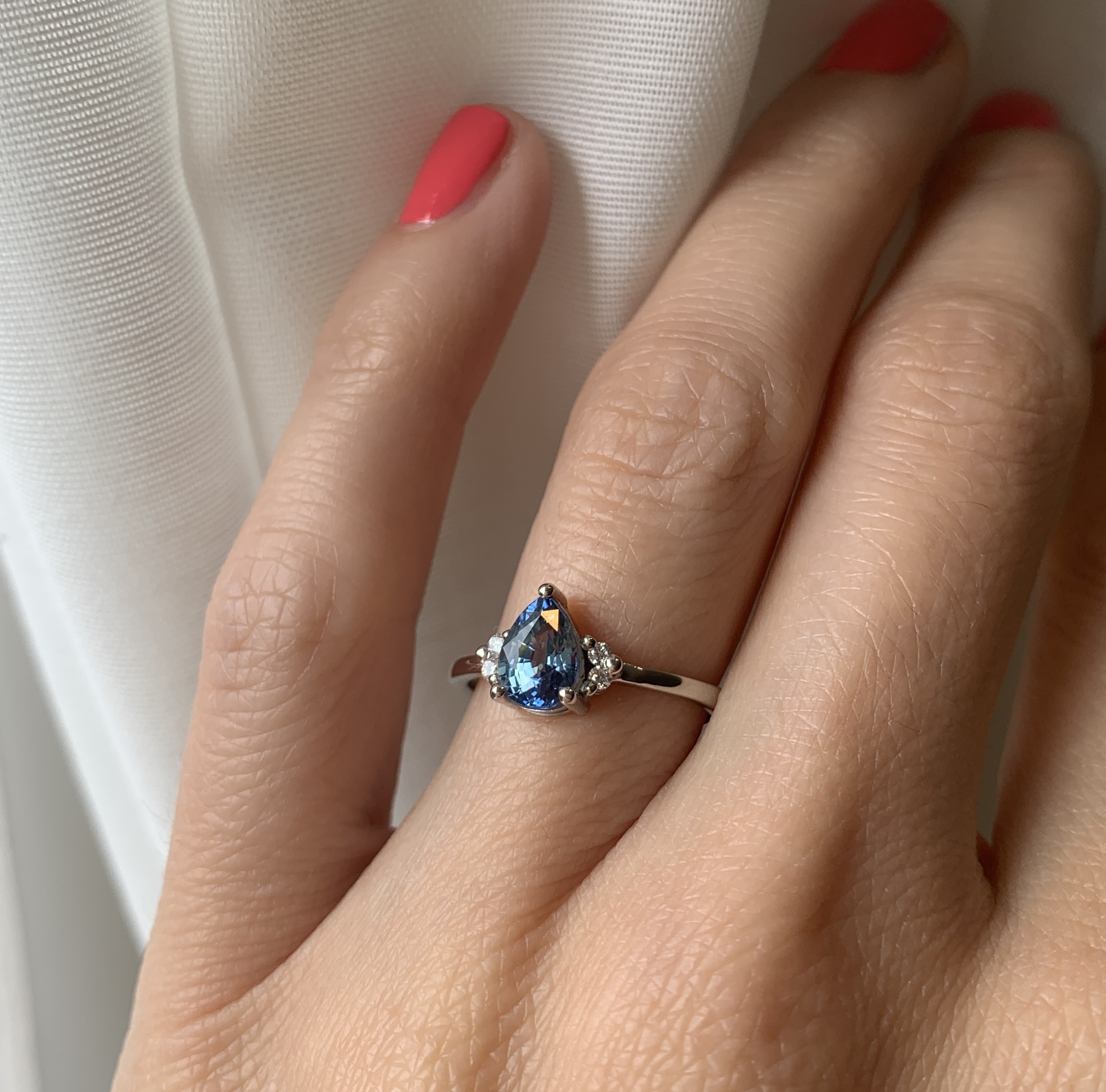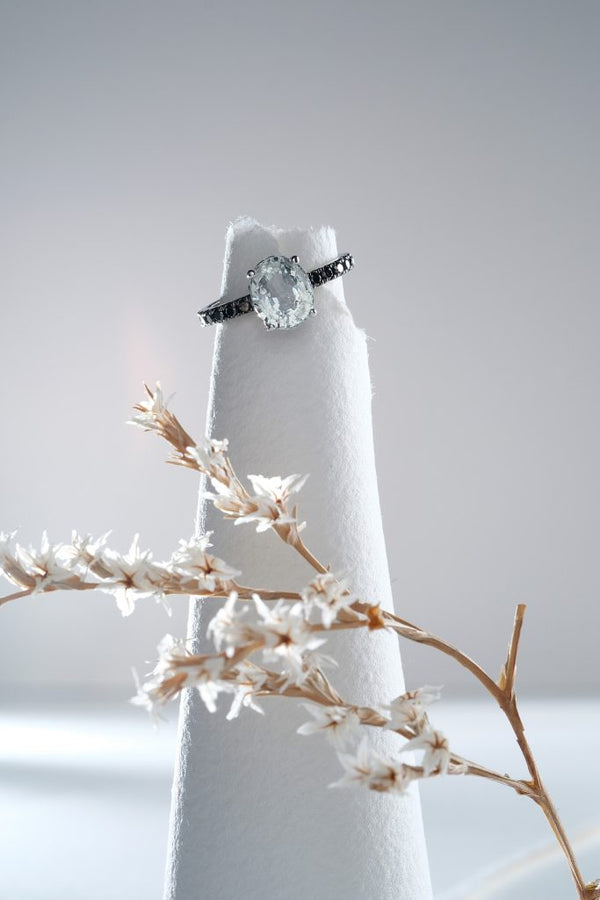Our Favourite: The Sapphire – An Ancient Gemstone for Modern Tastes, Part 2
May 16, 2025
Ceylon Green Sapphire and Black Diamond Ring by LIKO Jewellery
The sapphire is an ancient gemstone that has retained its beauty and value through millennia. But what makes it one of my favourite materials to work with? Read on!
As I shared earlier, Sri Lanka is one of the oldest sources of sapphire. This gemstone is not only rich in value but also in colour. Beyond the vivid blue varieties, you should get to know pink, peach, yellow, orange, green, teal, colourless, and white sapphires.

What Does "Sapphire" Mean?
The name "sapphire" comes from the Latin sapphirus, which in turn derives from the Greek sappheiros, meaning "blue". It also appears in Hebrew (sappir), Iranian (sani-prijam) and Sanskrit (shani priya), where it means “beloved of Saturn” and is linked to the planet Saturn.
The Meaning Behind the Colours
The very word sapphire ("blue") hints at communication and connection. But the other colours also carry symbolic meaning. A ring with a pink sapphire can suggest romance and love. A colourless sapphire can represent purity and a new chapter. A green sapphire reflects natural harmony and the beginning of a shared life.

Sapphire as a Value Statement
When considering the price of a custom engagement or wedding ring, it’s worth noting that high-quality sapphires are more common up to one carat. If you want to make a statement with a larger stone, sapphires up to three carats are still reasonably accessible. Over five or ten carats, however, high-quality specimens are rare—though not impossible to find.
Sapphire Through History
Historically, sapphires have symbolised royalty and romance. In the Middle Ages, kings wore dark blue sapphires believing they would protect them from enemies—thus inspiring the term "royal blue".
The Most Famous Sapphire Engagement Ring
Surely you’ve heard of Princess Diana’s legendary 12-carat oval royal blue sapphire engagement ring, surrounded by diamonds. It was given to her by the now-King Charles in 1981.
This iconic ring was later passed on to Catherine, Princess of Wales, by Prince William—slightly adapted to her personal style.

When ordering a sapphire jewel from me, it’s important to know: I exclusively prefer the natural beauty of Ceylon sapphires and reject any artificial treatments (chemical enhancement, irradiation, dyeing, surface diffusion, etc.).
Discover my custom sapphire pieces now!
Curious to learn more? Click here to read the first part of this blog post.
Don’t hesitate to book a consultation with me — I’m sure we’ll find the perfect solution for you.



